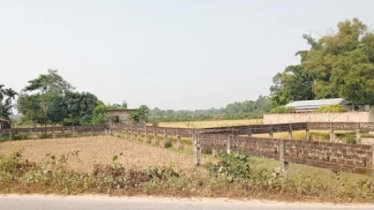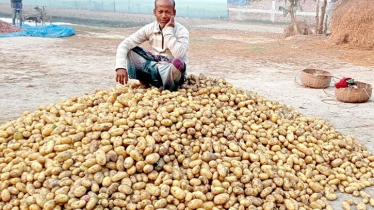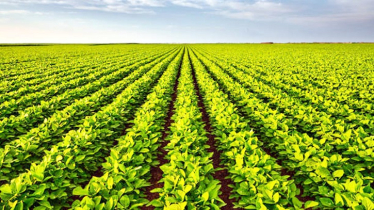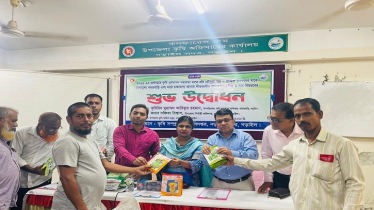
A farmer in Dinajpur has achieved remarkable success by cultivating high-yield hybrid papaya in his potato fields, earning far greater profits than from his traditional crops. Through proper planning, guidance from the Department of Agricultural Extension (DAE), and relentless hard work, farmer Musa Mia of Bachar village under Paltapur Union in Birganj upazila has turned his three-bigha farm into a model of success. Each papaya tree in his field now bears 30 to 50 fruits, creating a spectacular sight that has inspired many in his community.
Musa cultivated two hybrid varieties of papaya, “Babu” and “Sukhi,” both known for their attractive appearance and high productivity. His success has motivated many unemployed youths and local farmers to take an interest in papaya farming, which requires low investment but promises high returns. Farmers believe that with greater support from the agriculture department, papaya cultivation could bring a major breakthrough in the region’s agricultural economy.
Walking through Musa’s farm, rows of papaya trees laden with fruits demonstrate what dedication and perseverance can achieve. The trees begin to bear fruit within three to four months of planting, with each papaya weighing between one and one-and-a-half kilograms. The flourishing orchard has become not only a source of income but also a source of inspiration for the younger generation.
Visitors such as Farhad Hossain, who came to see the farm, expressed astonishment at the results. “I never imagined such impressive yields could come from such a small area,” he said. “Now I’m planning to cultivate Babu and Sukhi papaya myself.”
Musa Mia explained that his nephew Ashraful Islam and a friend named Biplob partnered with him to invest in the farm. “We brought high-quality Babu and Sukhi papaya seedlings from Dhaka and planted 3,000 saplings on three bighas of land,” he said. “The total investment was around Tk 200,000. Within just five months, I sold papayas worth Tk 200,000. The trees are still producing heavily, and I’m selling fruit every month. I’ve already sold three batches. Although each round costs about Tk 50,000, I earn over Tk 100,000 per sale. Ripe papayas fetch even better prices. I expect to continue harvesting for more than two years.”
He added that he had previously cultivated potatoes but found the profits too low compared to the costs. “After consulting the local agriculture office, I switched to papaya. Now I see that with hard work, this crop can bring excellent returns. My family’s financial situation has improved significantly, and demand for these papayas in local markets is strong.”
The Babu and Sukhi varieties begin bearing fruit within five to six months and continue producing for up to two years.
Birganj Upazila Agriculture Officer, agriculturist Shariful Islam, said that cultivation of hybrid papaya, especially Babu and Sukhi varieties, has expanded significantly across the upazila. “Farmers are gaining quick profits from hybrid Babu papaya, and Musa Mia is a prime example of this success,” he said. “Seeing his results, many others have shown interest in papaya farming. The Department of Agricultural Extension is providing all necessary assistance to papaya growers.”
According to the agriculture department, the best time to plant high-yield hybrid Babu and Sukhi papaya is from February to April. The fruits are oval to elongated, slightly ridged, and weigh between 1.5 and 2.5 kilograms. The flesh is thick, yellow, sweet, and flavorful. These varieties adapt well to Bangladesh’s climate, can be marketed both ripe and unripe, and are resistant to viral diseases.
Because the fruits ripen slowly and do not spoil easily, they can be transported long distances without damage. With a lifespan of more than two years and consistent yield, hybrid papaya cultivation has the potential to become one of the most profitable agricultural ventures in northern Bangladesh.
For farmers like Musa Mia, the switch from potatoes to papaya has proven that innovation, scientific guidance, and perseverance can transform rural livelihoods—turning once modest farmlands into stories of prosperity and inspiration.





